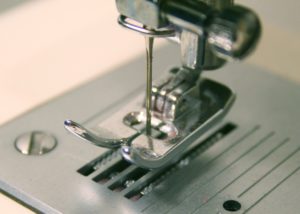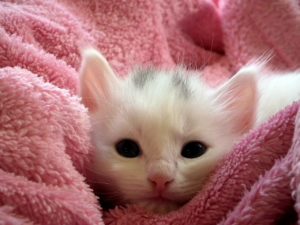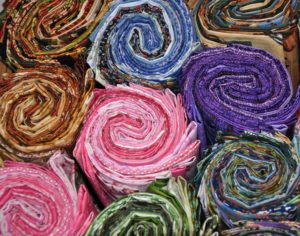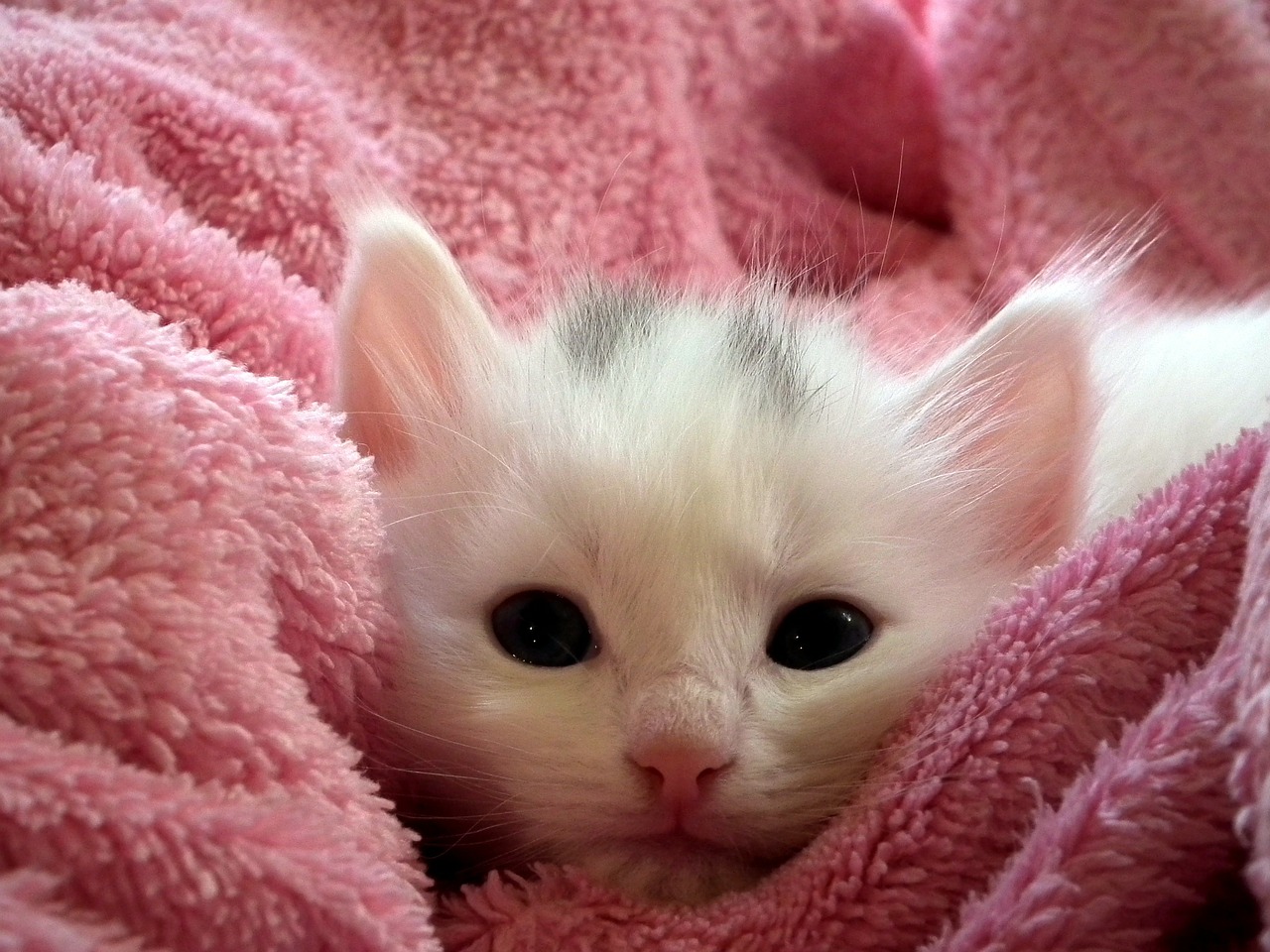
Now that you have chosen you fabric, pattern and design you may begin piecing you quilt top. Try not to place blocks that are too similar in design or color next to each other. Once you are satisfied with the design just divide the quilt into rows, either vertical or horizontal and begin sewing.
Traditional quilting involves following the outline of the block’s design. What quilting design you choose will also affect what pattern and fabrics you choose and vise versa. Obviously, if you want to use stencils and the design quilting method, you must choose fabric that has room for you to stencil on it.
Traditional quilting involves following the outline of the block’s design. You would stitch 1/4 inch from each seam line on your pieced or appliquéd patch. This would be just outside the pressed seam allowances.
Overall design quilting ignores the block’s pattern and uses an overall design. Three overall designs often used are grids of clamshells, squares and diamonds.
Echo design quilting is when lines of stitching follow the outline of the block, then are repeated every 1/4 inch. This repetition makes sections of very heavy quilting and is not practiced by beginners.
What quilting design you choose will also affect what pattern and fabrics you choose and vise versa. What you need to learn to do is visualize the completed project before you even begin. Obviously, if you want to use stencils and the design quilting method, you must choose fabric that has room for you to stencil on it.
There are many decisions to be made before a quilting project begins. The first is choosing what design you will use. This choice may vary from project to project.
If you are hand quilting your project you will require either a quilt frame, or a large hoop. Once your project is secure you begin stitching the three layers together in very small uniform stitches, using the design you chose earlier.
It should be cut about 1 inch smaller than the backing and one inch larger than the quilt top. The quilt top on top of the batting face-up. Baste the layers together, beginning in the center of the quilt.
In Design quilting, you embellish your quilt block with a set design. You simply purchase a quilt stencil and trace onto your patch in any open spaces.
Stitching in the ditch is another quilting process. In this method you stitch right into the seam. The shape of the design becomes distinct and the stitches are almost invisible as the fabric on each side of the seam puffs up around them.
Now that you have chosen you design, pattern and fabric you may begin piecing you quilt top. Once you are satisfied with the design just divide the quilt into rows, either vertical or horizontal and begin sewing.
The batting and the backing should be just slightly larger than the finished quilt top. Backing fabric usually needs to be seamed together. The traditional way is to seam three lengths of fabric, of equal widths, vertically down the backing.
Once your quilt top is finished you are ready to layer it together with the batting in the middle and the backing fabric on the back. This type of batting comes in different lofts or thicknesses, the thicker the loft, the warmer the quilt.

The Quilting Machine – To Use Or Not To Use

Quilting 101 – Getting Started

